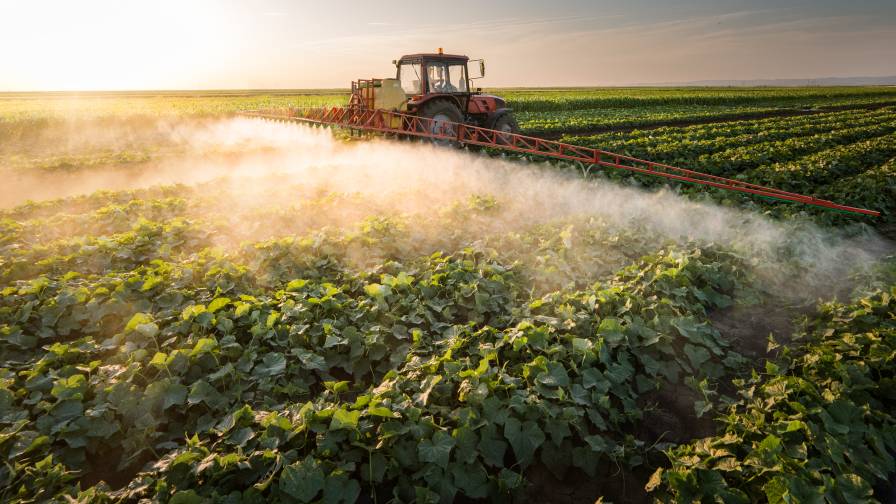Weather Bolsters Crop Prices in the Latter Half of 2012
The agrochemical market in the first half of 2012 was positive, but not to the same extent as in 2011, according to a report by Phillips McDougall.
The outlook for the rest of the year is good, as crop prices rise again due to weather-affected harvests in Latin America, the U.S. and Europe, giving rise to the expectation of increased crop planting in Latin America in the forthcoming 2012/2013 agricultural season.
On average, in the first half of 2012, the prices of all the major commodities except rice were lower than in the corresponding period of 2011. However, the impact of adverse weather on crop production in 2012 had little bearing on crop prices until the start of the second half of the year.
Lower crop commodity prices at planting time for the 2011/12 agricultural year contributed to the variability observed in the global planted area of wheat, maize, rice, soybean, oilseed rape and cotton in 2012 versus 2011.
Around the world
In Latin America, sustained crop prices generally led to an increase in crop planting in the 2011/12 season and a high level of confidence in agricultural markets. The Argentine maize area was up by 8.7%, although the soybean area declined by 1.9% and rice by 8.1%. In Brazil, the soybean area increased by 3.4% with the area planted with glyphosate tolerant varieties rising to over 80%, while the maize area rose by 9.5% with glyphosate-tolerant varieties now increasing in importance. The cotton area was static due to rising stocks and falling prices and the cultivation of rice and beans both declined.
The 2011/12 season got off to a good start with better weather and strong crop prices and a high level of confidence. However, dry weather set in during the summer resulting in reduced production of all crops except maize in Brazil, and also in Argentina where dry weather is also affecting planting for the 2012/13 season. Agrochemical use in the Latin American region as a whole continues to benefit from an improved agro economic situation based on rising demand, higher crop prices, improved economic conditions and greater investment.
During 2012, the area planted with cereals in the EU 27 countries increased marginally by 0.6%, however within this, the soft wheat area declined. In contrast, the area of grain maize in the EU 27 rose by 7.9% aided by the improved crop price. The area of oilseed crops planted in the EU 27 declined (-6.2%), despite a rise in the sunflower area. The area of cereals planted in Russia for the 2010/11 season was depressed by dry weather at planting time, this acreage was recovered in 2011/12, however a high level of winter kill followed by a dry summer has depressed any recovery in production in 2012. Similar dry weather has been affecting much of Eastern Europe in summer of 2012. Crop cultivation in the EU in 2012 got off to a good start with an early end to the winter, but has since been negatively affected by a wet summer in northern Europe, but low rainfall in the south.
In 2012, crop planting in the U.S. got off to a good start, with area increases for maize, wheat and soybeans, although cotton declined. Crop development in the central corn belt has since been significantly depressed by drought, although most other areas of the country are more positive than last year. Uncertainty surrounded the U.S. market at the start of 2012 due to a shortage of corn seed, the ending of ethanol blending subsidies and the prospects of a new Farm Bill. Concerns centered on the prospect of overproduction of crops, less subsidy and reduced usage of corn for ethanol, however all of these have been outweighed by the impact of the drought.
The Canadian crop protection market in both 2010 and 2011 was held back by significant spring flooding, but with a milder winter and less snowmelt this was avoided in 2012, with a rise in crop planting. Wheat was up 10.9%, canola was up 12.8%, soybeans were up 12.7% and maize was up 20.9%. The outlook for 2012 is far more positive. Mexico suffered from drought in 2011, rainfall is better in 2012 but still not back to optimal levels, hence some market improvement is anticipated.
The price of rice continues to rise as stocks remain low by historic standards. Rice acreages change little between years as most of the major countries are producing paddy rice at near capacity levels, hence, the major impact on production is due to weather effects. In 2011, sustained demand, flooding in Thailand, drought in northern China and the Tsunami in Japan all affected rice output resulting in stronger prices. In 2012, another variable monsoon in India and wet weather across southern Japan, the Philippines and Southern China is affecting production. In Australia the planted area of wheat declined in 2012 with the strength of the Australian dollar continuing to affect the profitability of crop exports.
Following a strong crop year in 2011, due to high crop commodity prices, the prospect was for improvement in agrochemical pricing in 2012, building on the strong farm economy. Company results suggest a positive pricing environment in 2012 although greater volume growth than anticipated has benefitted company sales. Volume opportunities did exist in 2012 due to recovery from the dry summer that affected Central West Europe in 2011; flooding in Canada, Thailand and Japan; the drought in Northern China and reduced grain areas in Russia. New agrochemical products continue to drive value growth, although on average overall glyphosate prices continued to decline in 2011. Greater stability in glyphosate pricing is evident in 2012, with improvement in China somewhat due to the banning of the 10% solution and the shift to higher priced products.
Market Outlook
Agrochemical sales at the company level have expanded by 8.2% in the first half of this year versus the outcome for the same period in 2011, as a result the expectation for the performance of the global crop protection market in 2012 is for further growth.
The key factors in this performance were improved agrochemical prices, volume recovery in markets affected by the weather in 2011 and further expansion in countries in the later stages of economic development where economic conditions, demand for crops and sustained levels of investment – notably in Asia, Latin America and East Europe.
Based on company reports, market growth in the first half has been high in the NAFTA region, despite very dry weather in the U.S. central corn-belt, Europe has also been positive despite variable weather patterns. Asia has benefitted from a positive performance in Japan, although growth has been held back in India (variable monsoon) and China (flooding in the South). The 2011/12 season in Latin American finished weakly due to dry weather, however the outlook for the 2012/13 season is very positive due to rising crop prices.
In this current year, the planted area of GM crops has again increased leading to a further rise in the value of the sector. Growth of the seed sector has been enhanced by high corn seed prices in the U.S. due to shortages in supply, a situation that is likely to recur in 2013 due to the current drought affecting corn production. The sum of the leading seed company sales in the first half of 2012 registered a 14.4% increase over the same period of 2011.
The outlook for 2013 is also positive, mainly due to further new traits reaching the market, favorable crop prices and increased GM crop adoption, particularly in Brazil.
Source Phillips McDougall, Edited by FCI Staff





